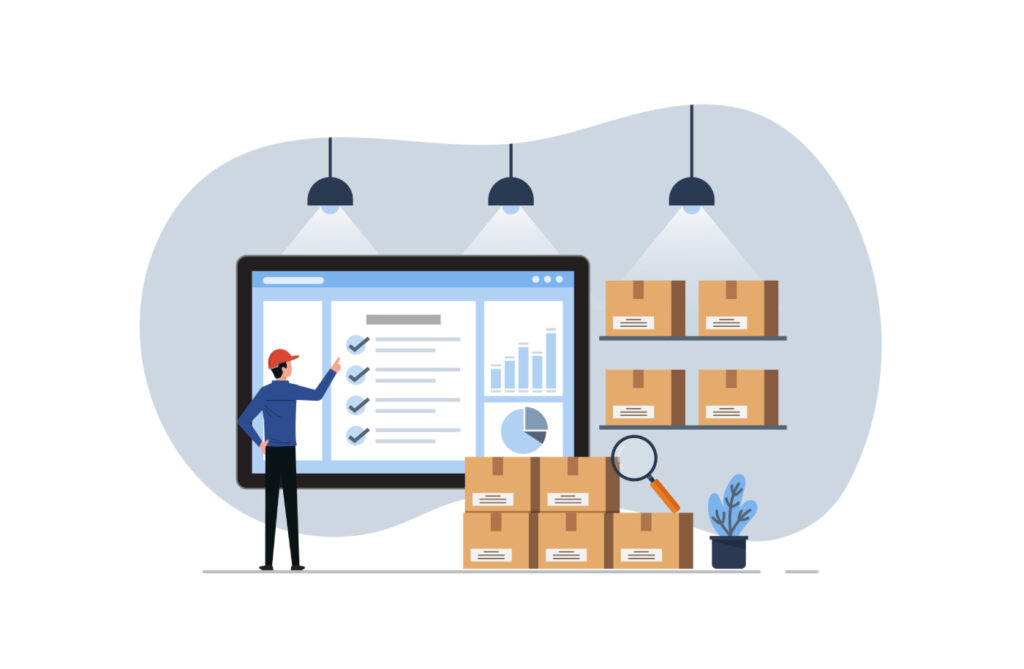Key takeaways
What are recurring payments?
Recurring payments, also sometimes called recurring billing or subscription payments, are automatically charged or deducted at regular, predetermined intervals, such as weekly, monthly, quarterly, or annually. These payments are facilitated by an agreement between a customer and a business, where the customer authorizes the business to automatically charge their credit card, debit card, or bank account on a recurring basis for products or services received.
The use of recurring payment processing has grown over the years, along with the growth of the SaaS industry. Recurring payments facilitate payments for streaming services, gym memberships, subscriptions, education websites, and SaaS products. They are also often used for large-ticket items such as rental fees, mortgage payments, monthly car payments, and wholesale recurring orders.
Recurring payment methods
Here are some of the most common payment methods used for recurring payments:
- Credit and debit cards: Most customers have access to credit and debit cards, making this method highly accessible. Card transactions are processed quickly, but card details can expire or be replaced. Recurring credit card processing is the most common recurring payment transaction.
- ACH payments: Automated Clearing House (ACH) payments are transfers from one bank account to another. These typically have lower processing fees compared to credit and debit card transactions, and account details are less likely to change compared to card details. However, processing times are longer than card transactions.
- Digital wallets: Digital wallets like Apple Pay or Google Pay are becoming increasingly popular among younger demographics.
Each method has its unique advantages and potential drawbacks, and selecting the right one depends on your business needs and customer preferences. Additionally, having a payment processor that supports a variety of payment methods is crucial for maximizing convenience and ensuring a seamless payment experience.
How do recurring payments work?
The two main components of a recurring payment system are the authorization from the customer and the payment platform used by the business. Recurring payments involve a series of automated steps that streamline the billing process for both businesses and customers. Here’s a detailed breakdown of how recurring payments work:
1. Payment processor integration and setting up recurring billing
To accept recurring payments, a business needs to sign up with a payment processor or gateway that supports recurring billing. The recurring billing plans will need to be set up on the payment platform. This includes determining the frequency of payments and the amount to be charged for each billing cycle.
2. Customer authorization
When customers want to subscribe to a product or service, they need to authorize the recurring billing schedule. This can be done through online signup forms or agreements. With online signup forms, customers provide their payment details, such as credit card, debit card, or bank account details, and consent to the recurring charges. With agreements, customers sign a service agreement that outlines the recurring payment terms.
Here’s a sample authorization form you can use to get started:
Download our authorization form for free:
Once authorized, the payment details are saved and secured by the payment gateway. The same payment details are used for succeeding payments.
3. Payment execution
On the predetermined billing date, the payment processor automatically charges the customer’s payment method. This process includes transaction authorization and funds transfer.
The payment will continue to be automatically deducted from the customer according to the agreed-upon schedule until the customer cancels the agreement. After every payment, receipts will be generated and sent to the client.
4. Reconciliation and account updates
To ensure accuracy and continuity, businesses must regularly reconcile payments and update customer account information. This involves verifying that payments have been successfully processed, addressing any failed transactions promptly, and updating expired or changed payment details. Maintaining up-to-date customer account information minimizes disruptions and enhances customer satisfaction.
A seamless and continuous recurring payment process hinges on the accuracy of the customer’s payment details. It is crucial to keep the payment details up to date so that succeeding payments are successfully processed without any issues.
Types of recurring payments
Recurring payments can be categorized based on their nature and frequency. Understanding the different types can help businesses choose the most suitable billing model for their products or services.
Fixed recurring payments
Fixed recurring payments involve charging a consistent, predetermined amount at regular intervals. This type is commonly used for services or products with a stable cost, providing predictability for both the business and the customer.
Some examples of fixed recurring payments are monthly streaming service subscriptions, gym memberships, monthly or annual fees for SaaS products, and subscription boxes.
Variable recurring payments
Variable recurring payments involve charges that fluctuate based on usage or consumption. This type is suitable for services where costs vary over time.
Some examples of variable recurring payments are payments for utilities, telecommunications, and other consumption-based services.
Hybrid recurring payments
Finally, Hybrid recurring payments combine elements of both fixed and variable payments. They involve a base fee with additional charges that vary based on usage or other factors.
Some examples of hybrid recurring payments are mobile phone plans with a fixed monthly fee and additional charges for extra consumption or services, and utility services that charge a base fee plus usage-based costs.
Benefits & challenges of recurring payments
Recurring payments offer numerous advantages for businesses, but they also come with certain challenges. Understanding both can help you effectively implement and manage recurring billing systems.
Benefits
Here are some of the benefits of recurring payments:
Challenges
Here are some of the challenges of recurring payments:
How to accept recurring payments?
Implementing a recurring payment system requires careful planning and execution. Here are the essential steps to ensure a smooth and effective setup:
1. Choose the right payment processor
Selecting the right payment processor is crucial for managing recurring payments effectively. Make sure to consider the following factors:
- Compatibility: Ensure the payment processor supports recurring billing and integrates well with your existing systems.
- Fees: Compare processing fees to find a cost-effective solution that doesn’t compromise on features.
- Security: Choose a processor with strong security measures, including PCI compliance.
- Customer support: Reliable customer support is essential for resolving any issues that may arise with transactions.
- Recurring billing tools: Look for a provider that has recurring billing tools such as billing templates, subscription management, customer portal, card vaults, and card auto-updater features to make automatic billing seamless.
2. Set up a recurring billing system
Once you’ve chosen a payment processor, the next step is to set up your recurring billing system. This involves:
- Defining billing cycles: Determine the frequency of payments (e.g., weekly, monthly, annually).
- Setting payment amounts: Establish whether payments will be fixed or variable.
- Creating customer profiles: Collect and securely store customer payment information.
- Automating invoicing: Ensure your system automatically generates and sends invoices to customers.
3. Integrate with existing systems
To streamline operations, integrate your recurring billing system with your existing business systems. Some key systems to consider include:
- ERP (Enterprise Resource Planning): Sync billing data with your ERP system for comprehensive financial reporting and management.
- CRM (Customer Relationship Management): Integrate with your CRM to manage customer relationships and track billing histories.
- Accounting software: Ensure seamless data transfer to your accounting software for accurate bookkeeping.
4. Ensure security and compliance.
Securing customer data and complying with regulations are crucial for managing recurring payments effectively. Follow these best practices:
- PCI compliance: Adhere to the Payment Card Industry Data Security Standard (PCI DSS) to protect cardholder data.
- Data encryption: Use strong encryption protocols (e.g., AES-256) to secure data during transmission and storage.
- Tokenization: Replace sensitive payment information with unique tokens to reduce breach risks and simplify PCI compliance.
- Data protection regulations: Ensure adherence to data protection regulations like GDPR and CCPA.
- ASC 606 compliance: Businesses that enter into contracts with customers should adhere to the Accounting Standards Codification (ASC) 606.
Related: How to Accept Payments Online
Best practices for managing recurring payments
Managing recurring payments effectively requires implementing strategies that enhance customer satisfaction, ensure security, and streamline operations. Here are some best practices to consider:
- Transparent communication: Clearly communicate billing terms and conditions to your customers. Ensure they understand the billing frequency, amount, and the process for updating payment information or canceling subscriptions. Transparent communication helps build trust and reduces disputes.
- Simplify signup and billing processes: Make it easy for customers to sign up for recurring payments. Use user-friendly interfaces and straightforward forms. Automated invoicing and billing processes reduce administrative burden and ensure timely payments.
- Offer multiple payment options: Provide a variety of payment methods to accommodate different customer preferences. Accept credit/debit cards, bank transfers, and digital wallets. Offering multiple options can improve customer satisfaction and reduce churn.
- Ensure data security: Protect customer data by complying with PCI DSS standards and using encryption and tokenization. Regularly update your security protocols to safeguard against breaches. Secure data handling builds customer trust and minimizes risks.
- Implement automated dunning management. Automated dunning management helps address failed payments by sending reminders and retrying transactions. This reduces manual intervention and improves recovery rates for missed payments.
- Provide self-service options: Enable customers to manage their subscriptions through a self-service portal. Allow them to update payment information, view billing history, and make changes to their subscription plans. Self-service options enhance the customer experience and reduce support requests.
Top payment processors for recurring payments
Choosing the right payment processor is crucial for effectively managing recurring payments. Here are some payment processors known for their robust features, security, and ease of use.
Stax
Stax offers a subscription-based pricing model, beneficial for high transaction volumes. It has its dedicated billing platform, Stax Bill, which simplifies invoice and subscription billing management by automating financial processes. Stax is ASC 606-compliant, easy to use, and provides a self-service portal for customers to manage their subscriptions. And, It has an auto-updater to ensure that expired card details are updated.
Additionally, Stax has an auto-updater to ensure that expired card details are updated. Stax is highly scalable, supporting businesses as they grow by offering advanced analytics, custom reporting, and integrations with various ERP and CRM systems to streamline operations.
Helcim
Helcim offers the Helcim Subscription Manager, a user-friendly and transparent solution for managing recurring payments. Its platform allows businesses to easily create and customize recurring billing plans, adjusting for various billing frequencies and amounts. Helcim uses interchange-plus pricing for its card processing fees, making it a cost-effective recurring billing solution.
It is designed to scale with businesses of all sizes, especially with its automatic volume discounts. It also provides features like customizable payment pages and comprehensive reporting tools. Large businesses can benefit from Helcim’s advanced security features and API integrations for seamless system connectivity.
Zoho
Zoho Books has its own subscription billing software called Zoho Subscriptions. Zoho Subscriptions comes pre-integrated with Zoho Books and can handle multi-currency accounting. It also supports a variety of payment gateways, has advanced reporting tools to help track subscription metrics, and includes features like automated invoicing, dunning management, and customizable billing cycles.
Zoho Subscriptions is highly scalable, offering tiered pricing plans that accommodate growing businesses. It provides robust API integrations, advanced analytics, and customizable workflows, making it suitable for large enterprises looking to automate and optimize their billing processes.





